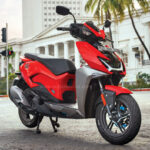
Having carved a distinct segment throughout the sub-4-metre compact SUV phase, the Tata Punch has made fairly an impression on the gross sales charts. With its SUV-esque styling and intelligent packaging, it has grow to be Tata Motors’ second-bestselling car (after the Nexon).
Hyundai now needs in on the motion too and has launched the Exter to seize a share of the Punch’s pie. With six airbags as customary, ESP (elective) from the bottom variant, and filled with fashionable niceties, the Exter is well-armed to tackle the Tata, and prospects have already taken discover. The car hit a milestone of fifty,000 bookings inside a month of its launch, but it surely has additionally persuaded Tata to introduce extra gear within the Punch (like a sunroof), to defend its place. We pit the AMT variants of those two sub-compact SUVs to seek out out which one deserves your cash.
Hyundai Exter vs Tata Punch: efficiency
Right off the bat, the Exter’s 1.2-litre, four-cylinder petrol engine impresses with its smoothness and refinement. Due to its linear energy supply and freer-revving nature, it delivers easy efficiency. And complementing it’s a smooth-shifting 5-speed automated guide transmission. What’s distinctive is that in contrast to standard AMTs, Hyundai has deployed electrical actuators to carry out gear shift duties reasonably than hydraulic actuators, and in consequence, shifts are comparatively seamless. Although sluggish, they circulation easily into one another.

This gearbox can also be properly reactive to inputs, and it additionally doesn’t hesitate to carry excessive revs serving to you extract the most effective out of this petrol engine. Those who take pleasure in driving will significantly recognize the presence of paddle-shifters, for larger management over the transmission and a better diploma of engagement. Appreciably, even in guide mode, in case you overlook to upshift or downshift, the AMT will do it for you.
Being a three-cylinder unit, Tata’s 1.2-litre has a rougher idle and emits some vibrations into the cabin. Sure, these smoothen on the transfer, however there isn’t a getting away from the gravely engine be aware and its louder thrum at larger revs. On the plus facet, the Punch’s engine makes extra energy, and likewise feels extra responsive and stronger decrease down the rev vary. Bring the 5-speed AMT into the equation, and issues are vastly completely different. The transmission is tuned for effectivity, so upshifts are early, and downshifts are conservative too. Even the pause between gearshifts is extra pronounced. Thus, general efficiency is lacklustre leading to unimpressive acceleration occasions.
.jpeg&c=0)
In our instrumented acceleration checks, the Exter AMT sprints from 0-100kph in 15.59 seconds, practically 4.5 seconds faster than the Punch AMT. Even the Hyundai’s rolling acceleration occasions from 20-80kph and 40-100kph are round 2 and three.5 seconds faster, respectively.
In our earlier reviews, we’ve had solely praises for the way in which Tata tuned the Punch’s suspension, which not solely exudes an underlying toughness, however will get the steadiness between experience and dealing with spot on. Seen again to again, the Punch’s stiffer suspension shines, the Tata feels comparatively extra planted and sure-footed at speeds, and its dealing with feels sharper too. Expectedly although, a trade-off to its glorious high-speed manners is that at metropolis speeds, experience high quality is agency and it feels a bit jittery over dangerous roads.
 With good floor clerance, each cars simply deal with a light-weight path.
With good floor clerance, each cars simply deal with a light-weight path.
On the opposite hand, the Exter’s softly setup suspension is tuned for consolation, so it swallows highway shocks and absorbs bumps very properly. And whereas it feels comfier within the metropolis, on the freeway, the Exter pitches and bobs extra. Another level of distinction between them is their brake pedal really feel – whereas stopping efficiency is comparable, the Exter’s really feel extra pure, whereas the Tata’s are a bit too sharp and take some getting used to.
Hyundai Exter vs Tata Punch: exterior design
Measuring 3.8m in size, these cars are shorter than most sub-4m compact SUVs, therefore they’re categorised as sub-compact SUVs. What’s fascinating is that they’re fairly related in each dimension, and their wheelbase can also be inside millimetres of one another, as is their floor clearance, with the Exter’s being 185mm and the Punch’s being 187mm.

The Exter is predicated on the Grand i10 Nios, however there’s nothing that visually hyperlinks ties to its hatchback counterpart, on the skin no less than. Hyundai has performed nicely to present it the much-needed ‘SUV’ aptitude; so its bonnet has been flattened, its stance has been elevated and it additionally sports activities chunky physique cladding and roof rails. And carrying a snazzy design language with distinctive parts corresponding to H-patterned DRLs, multi-dimensional panels (on the entrance grille, C-pillar and boot) and exaggerated haunches, the Exter has rather a lot going for it.
The Punch isn’t primarily based on a earlier car and is underpinned by the ALFA platform. The car is a well-proportioned, good-looking one which strikes some resemblance to the Harrier when considered head-on. In addition, its bigger 16-inch alloys and comparatively cleaner bodywork add to its enchantment.

Another speaking level is the Punch’s good efficiency in Global NCAP checks in 2021, the place it secured 5 stars for crash security. While the Exter hasn’t been crash examined, Hyundai claims to have strengthened the construction over the Nios, which was awarded 2 stars by Global NCAP in 2020. Hyundai is assured now that its stronger construction and security options like six airbags and ESP will equate to a decent crash security rating.
Hyundai Exter vs Tata Punch: inside, seating
In distinction to its snazzy exteriors, the Exter’s cabin is acquainted to the Grand i10 and is monotone in shade. Thus, it feels a bit drab. Hyundai has cleverly positioned the seats low to liberate a sense of area inside, and its sunroof performs an enormous function to brighten up this area. But the speaking level is undoubtedly the standard of bits and fit-finish on the within, and that units a benchmark on this phase; even the knobs, buttons and stalks function with nice finesse.
.jpeg&c=0)
Ergonomics are friendlier than the Tata’s and whereas its entrance seats are comfy, these with bigger frames would possibly discover them a bit missing when it comes to bolstering and assist. Like the entrance, even its rear seat is lower-set, so this can be a car that you simply sit inside, and never stroll into, just like the Punch (extra on that later). Space on the rear is ample for 2 adults, and the backrest is properly angled. Rear AC vents add to passenger consolation, however a rear armrest is lacking.
.jpeg&c=0)
The Punch’s doorways open 90 levels and its seats are higher-set than the Exter’s, which eases ingress-egress. What additionally makes a optimistic impression is the cabin’s vibrancy and airiness due to the white fascia on the layered dashboard, in addition to a splash of physique color round its air vents. You’re sat in a extra ‘SUV’ place with the bonnet in your sight view, and even its entrance seats are broader and extra accommodating than the Hyundai’s.
.jpeg&c=0)
In its newest iteration, Tata has additionally launched Land Rover-like armrests for the entrance seats, to reinforce seat consolation. At the again, you might be seated in a really chair-like place, with the backrest that’s comparatively extra upright. While area is comparable with the Hyundai, the Tata will get a centre armrest, though it lacks rear AC vents. While on paper, the Tata’s boot is way smaller than the Exter’s, and despite the fact that it isn’t as deep, usable baggage area is sort of comparable.
.jpeg&c=0)
Hyundai Exter vs Tata Punch: options
Both the Exter and Punch boast of options like a sunroof, computerized local weather management, reverse digicam, cruise management and Android Auto/Apple CarPlay, among the many notable ones. The Punch will get bigger 16-inch wheels (versus the Exter’s 15-inch), great-sounding Harman audio system, auto headlamps, rain-sensing wipers and a intelligent Traction Pro function (brake locking differential) to tug you out of some sticky conditions.
.jpeg&c=0)
On the opposite hand, the Exter will get six airbags throughout the vary, ESP in addition to fashionable niceties like a bigger and slicker 8-inch touchscreen (versus Punch’s 7-inch), sprint digicam, digital instrument cluster, wi-fi charging and rear air-con vents.
| Equipment guidelines | ||
|---|---|---|
| Hyundai Exter SX(O) DT | Tata Punch Creative Flagship (DT) | |
| Projector headlamps | Yes | No |
| Alloys | 15-inch | 16-inch |
| Touchscreen | 8-inch | 7-inch |
| Android Auto/Apple CarPlay | Yes | Yes |
| Wireless Charging | Yes | No |
| Sunroof | Yes | Yes |
| Dash Camera | Yes | No |
| Rear AC vents | Yes | No |
| Auto headlamps/wipers | No | Yes |
| ESP | Yes | No |
| Airbags | 6 | 2 |
| Price | Rs 10.10 lakh | Rs 10.10 lakh |
Hyundai Exter vs Tata Punch: verdict
The Tata Punch has its strengths: it appears to be like good, drives confidently, and, on account of its elevated seating, it’s the better option for the aged.
However, in each different manner, the Hyundai Exter is healthier than the Tata. Its engine is extra refined, efficiency is stronger, gearbox is smoother, and area and practicality are marginally higher. And, typical to a Hyundai, it’s well-equipped and packs in lots of fashionable niceties that the Punch misses. With a lot going for the Hyundai Exter, it wins this comparability fairly convincingly.
.jpeg&c=0)








